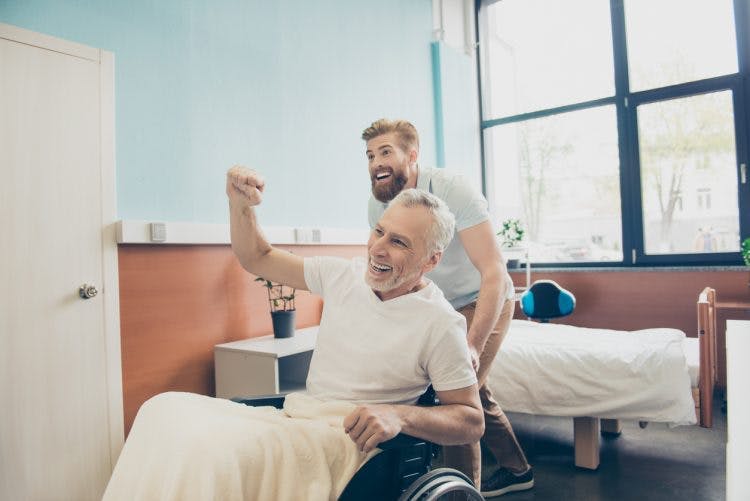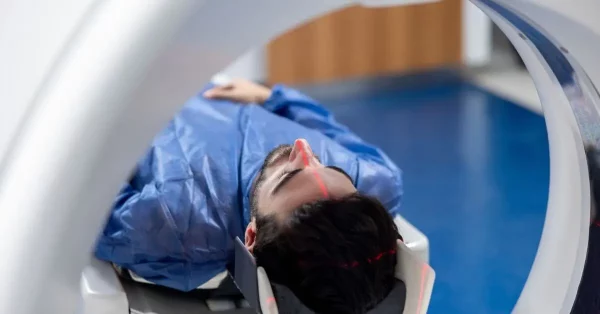When a person experiences a severe brain injury, the prognosis is often bleak. Yet, there are hundreds of severe brain injury recovery stories where individuals defy the odds and go on to live productive, fulfilling lives.
This article will share some powerful severe brain injury recovery stories. While every traumatic brain injury is unique, these inspirational stories demonstrate that it is possible to achieve recovery.
What is a Severe Brain Injury?
A severe traumatic brain injury (TBI) is the most serious type of brain injury resulting from significant damage to the brain. Individuals who sustain a severe TBI experience substantial functional deficits and may remain in a coma for multiple days, months or even years.
The Glasgow Coma Scale (GCS) is used to determine the extent of impaired consciousness following a traumatic event. It consists of 15 points that assess an individual’s responsiveness based on their eye opening responses, verbal responses and motor responses.
Lower GCS ratings signify more severe brain injuries. For a brain injury to be categorized as severe, a GCS rating must be 8 or below and the individual must have lost consciousness for more than 24 hours. Generally, the lower the GCS rating, the worse one’s recovery outlook.
While severe brain injury has the highest mortality rates, research has also shown that, one year after injury, about half of all severe brain injury survivors recover enough to function independently at home for 8 hours per day. Furthermore, 12.5% of severe brain injury survivors achieve a nearly full recovery.
5 Severe Brain Injury Recovery Stories
The following true stories describe the impressive progress of five severe brain injury survivors. Although each individual had a unique experience, they were all able to defy the odds and achieve a better recovery than expected.
Dylan’s Diffuse Axonal Injury Recovery
Perhaps one of the most impressive severe brain injury recovery stories is about a 19-year-old named Dylan, whose story was shared in the Neurocritical Care Journal. Dylan suffered a severe traumatic brain injury due to a car accident that left him unresponsive and barely breathing. It took 8 minutes to extract him from the car before he was rushed to the nearest hospital by ambulance.
Scans revealed that Dylan had suffered one of the worst types of brain injuries: a diffuse axonal injury. An CT scan found multiple areas of bleeding in and around the brain, which would continue to cause damage if not addressed. Less than an hour after arriving to the emergency room, Dylan underwent an emergency surgery to relieve pressure on the brain and address the bleeding.
However, surgery did not rouse Dylan from his coma, and he remained unresponsive. His 6 month recovery prognosis was poor, with a 30-78% chance of being in a persistent vegetative state, severely disabled, or deceased. Fortunately, Dylan beat the odds.
After 17 days, Dylan’s eyes opened spontaneously and an EEG showed Dylan’s brain responding to stimuli for the first time. At this point, he had transitioned from a coma to a vegetative state.
By day 60, following multiple surgeries and a transfer to an inpatient neurorehabilitation program, Dylan was able to move from his bed to a chair with moderate assistance from therapists. Three months after his injury, Dylan could walk 50 feet independently and accurately respond to yes-or-no questions the majority of the time.
Dylan continued to make miraculous improvements throughout his recovery. When he returned for his one-year follow-up, he was living at home with his family and could perform nearly all activities of daily living independently. At his two-year check-up, Dylan was functionally independent and could even perform basic work tasks.
Dylan’s case shows that initial exams and scans are not always accurate at predicting a person’s recovery outlook. With consistent rehabilitation and a supportive family, Dylan was able to achieve a much better recovery than expected.
How Brett Defied a 1% Chance of Recovery
After a skiing accident his freshman year of college, Brett was diagnosed with a severe brain injury that affected his memory, comprehension, speaking, mobility, and activities of daily living. Doctors predicted that Brett only had a 10% chance to live and a 1% chance to live and be functional. Regardless, he started rehabilitation the very next day, even though he was not yet conscious.
At the beginning of his severe brain injury recovery, Brett could not speak, sit independently, stand or walk. With the support of his family, Brett determinedly pursued rehabilitation to address these deficits. His recovery was made possible, at least in part, through the use of the following therapeutic interventions:
- Music therapy. Speech is a skill that is typically associated with the left side of the brain. By participating in music therapy, Brett learned to use the right side of his brain (the side responsible for processing music) to speak again. Around one month after his injury, Brett was able to sing. Through music and speech therapy, he continued to improve his communication skills until he was able to speak effectively.
- Body-weight support system. To relearn how to walk, Brett used harness connected to an overhead body-weight support system. This allowed him to practice the movements involved in walking without having to support his own weight. It also eliminated the risk of falling. Using this system along with other walking interventions, Brett regained the ability to walk independently by 3 months after his injury. Less than 2 years into his recovery, he was able to run.
- Consistent and repetitive practice. Throughout his rehabilitation, Brett was constantly practicing increasingly challenging exercises and activities. Consistently and repetitively practicing functions weakened by brain injury can promote neuroplasticity, a term referring to the brain’s ability to rewire itself. By activating neuroplasticity, healthy areas of the brain can take over for damaged areas, resulting in functional improvements.
With consistent practice and a determination to recover, Brett was not only able to regain his ability to speak, walk and run, but he also returned to school and learned to drive again.
Woman’s Miraculous Progress After 7 Years in a Persistent Vegetative State
A case study published in 2019 highlighted the miraculous improvements that can occur, even years after an initial injury. According to the study, a 15 year old female experienced a severe, non-traumatic acquired brain injury due to a brain hemorrhage in 2004. Upon arriving to the hospital, she underwent multiple surgeries and had several complications.
Eventually, she was transferred to a nursing home near her parents, and remained there in a persistent vegetative state. Her parents and staff were caring and continued to stimulate her throughout her stay at the nursing home. In February of 2011, nearly 7 years after her initial brain injury, the woman displayed the first signs of regaining consciousness: she was able to follow someone with her gaze.
In March of 2013, the woman was transferred to a rehabilitation center. At that point, she was alert, conscious and able to comprehend and follow directions. However, she continued to have multiple deficits, including being dependent in all of her activities of daily living, having multiple motor impairments, and experiencing many vision issues.
Following rehabilitation, the woman was able to live at home with her mother and attend a day program for brain injury survivors. By 2017, she had regained some of her mobility, vision, and cognitive skills. She could speak, use a smartphone, perform cooking tasks with some assistance, and use a computer with supervision.
These improvements are incredible considering the length of time spent in a persistent vegetative state. Through consistent family support and rehabilitation, this woman was able to drastically improve, even years after her brain injury.
Simon’s Recovery After Being Comatose for Over a Month
A tragic hit-and-run left Simon so broken that the paramedic at the site initially mistook him for dead. Despite his serious condition, Simon would eventually make one of the most significant recoveries from severe brain injury in medical history.
Simon’s brain injury destroyed a third of his right hemisphere and caused severe internal bleeding. When the doctors evaluated him, he scored only 3 points on the Glasgow Coma Scale, the lowest score possible. Simon’s coma lasted over a month, and the estimated possibility of a positive recovery was below 7%.
When Simon finally woke up, he had almost no awareness of his surroundings. He had forgotten how to read or write, and could barely understand what others were saying. His attention span was minimal, and he even scored a 50 on the IQ test (the lowest score possible). Doctors predicted he would have to depend on others for the rest of his life.
Simon was lucky enough to get the help of a therapist who refused to give up on him, despite his seemingly hopeless case. His therapist focused on cognitive therapy activities three times a week, which allowed his mental abilities to more than double.
After only two years, Simon went from needing significant assistance in almost all tasks to living on his own with only minor assistance. Today, Simon has regained nearly all his cognitive functions, and now has the exceptional IQ score of 151. He has even written a bestselling book and performed a TED talk about his recovery story.
Want 20 pages of brain injury recovery tips in PDF form? Click here to download our free ebook “15 Things Every TBI Survivor Must Know” (link opens a pop up for uninterrupted reading)
William’s Nearly Full Recovery from Severe Brain Injury
In March 2002, 21-year-old William suffered a severe traumatic brain injury from a rollerblading accident. He came in and out of consciousness immediately following the injury and had a GCS rating of 7 upon arrival to the hospital, signifying a severe brain injury. At this point, William had some movement in his arms and legs, but had no conscious behavior.
After an emergency surgery, William’s family was told that he had only a 20% chance of survival. If he did survive, it was predicted that he would most likely not recover consciousness and that his chances of a full recovery were non-existent.
Nine days after his TBI, William opened his eyes and began to follow commands. By the 13th day, he was awake and responsive. He had regained the ability to communicate through gestures and move with good strength and control. After 20 days, he was able to walk 100 feet, and he had regained his memory within a month. By Christmas of that same year, William felt completely normal, regaining nearly all his cognitive and motor functions.
Throughout his recovery, William participated in rehabilitation. Friends and family were also invested in William’s recovery process, and spent time praying for his recovery. While this type of severe brain injury recovery is extremely rare, it goes to show that anything is possible.
Every Severe Brain Injury Recovery Story Involves Hope
Even when medical experts told them their chances were slim, these 5 severe brain injury survivors never lost hope. Because of their unrelenting perseverance, they overcame impossible odds and made astonishing recoveries.
Support of family and therapists, along with the having the determination needed to consistently pursue recovery, can be instrumental in achieving a good recovery. While not every story has a happy ending, these severe brain injury recovery stories serve to provide hope that anything is possible.










